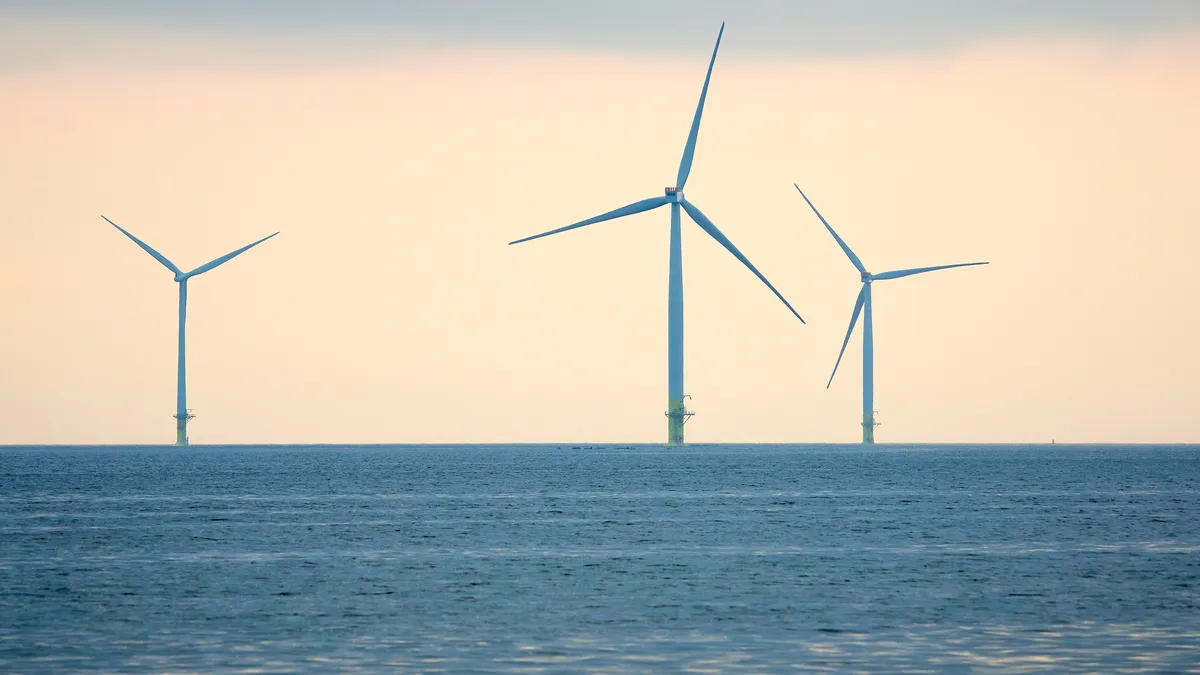Dive Brief:
- GE Vernova’s Wind business line saw a 40% decline in organic orders and a 7% decline in organic revenues in Q1 2024 as its customers worked through siting and permitting challenges for new wind projects, the company said Thursday.
- The company released its quarterly earnings report a week after New York cited GE Vernova’s pivot away from an 18-MW turbine model as a factor in the cancellation of 4 GW in offshore wind projects. GE Vernova plans to focus on development of its new 15.5/16.5-MW turbine instead, CEO Scott Stravik said on a Thursday earnings webcast.
- GE Vernova’s Power and Electrification business lines performed better in the first quarter, with organic revenues increasing by 4% and 21%, respectively, amid strong demand for gas turbines and grid infrastructure, the company said. Companywide organic revenue increased 5%.
Dive Insight:
GE Vernova’s decision to move away from the 18-MW turbine was the latest blow for a beleaguered U.S. offshore wind industry, which saw several project cancellations in late 2023 and early 2024 amid ballooning costs and persistent supply chain challenges.
New York blamed “material modifications” for the cancellation of three offshore wind projects that had received provisional state awards. GE Vernova and LM Wind Power, a rotor blade supplier, also received $300 million in provisional state awards for the projects.
“We just collectively, as a system, couldn't get it across the line on those projects in that auction,” Strazik told Reuters on Thursday. A prototype for the 15.5-MW model, which he said is capable of a “power boost” to 16.5 MW, could debut in late 2025, he added.
On the earnings call, Strazik described the cancellations as an “iteration of the partnership with New York State” and stressed that GE Vernova “[believes] offshore wind is going to play an important role in the energy transition.” But he also noted that “there's a lot of complexity in offshore wind that we're all learning from” and said GE Vernova will add to its wind turbine backlog only if it can secure more favorable terms on future orders.
Strazik and GE Vernova CFO Ken Parks sounded more optimistic about prospects for the company’s onshore wind segment and its two other main business lines. The Power business, which includes gas, steam, hydro and nuclear, benefited from a “strong uptick in demand” for gas power in particular, with capacity utilization of the “over 7,000” GE Vernova turbines currently in service increasing by “low single digits,” Strazik said. The capacity utilization is a tailwind for GE Vernova’s “high-margin services business,” he added.
GE Vernova expects “increases in electricity demand growth … along with a continued shift away from coal,” to drive incremental gas power capacity additions in the coming years alongside customers’ investments in existing gas fleets, Strazik said.
Customers planning gas fleet expansions “are focused on how capacity additions this decade can be decarbonized in the next decade with both hydrogen and carbon capture,” Strazik said. Most GE Vernova gas turbines can be configured to run on fuel blends up to 100% hydrogen by volume, though already-installed turbine systems may require significant retrofits and the company’s high-capacity HA-class turbines currently top out at 50% hydrogen blend potential, GE Vernova’s website says.
Strong demand for high-voltage switchgear equipment and transformers in the U.S. and Europe was partly responsible for the 21% organic revenue jump in GE Vernova’s Electrification business, Parks said on the call.
Increasing demand for electrical components and a broader rise in grid investments mean the Electrification segment “has the strongest demand and pricing dynamics” of GE Vernova’s three business lines, Strazik said.
With its products “key to ensuring a reliable electricity system and for connecting new generation … Electrification is the [business line] where we have the best opportunity to challenge ourselves on both growth and margins we can achieve in the medium term,” he said.














